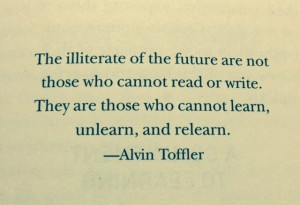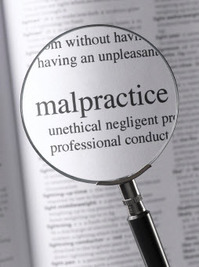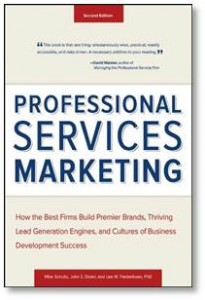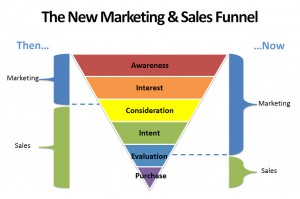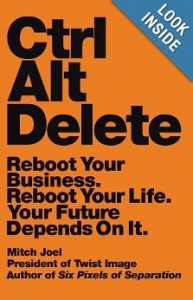Fix Sales Problems: Stop Playing “Kick the Can”…with Buyers
The role of sales has changed significantly over the last 10 years. On the one side we now have buyers who now are 60% to 74% through the buying process before they speak with a salesperson. Buyers today do their research online. They check out your product, what your customers are saying about your company, your products and service, and they are doing searches on the salesperson individually. Over 90% of buyer’s today report they do not respond to cold calls. On the other side of this sales tug of war we have CEO’s and other senior team members concerned sales is leaving money on the table in how they price products. They are commonly concerned the sales team is “selling on price” and not “selling on value.” To respond to this tug of war some salespeople often play “kick the can” with buyers and lose sales they could have won today and in the future.
When I was growing up in Cleveland Ohio a game we often played when the sun went down was kick the can. If you are not familiar with this game it is kind of like hide and seek. One person is “it” and everyone hides. The person who is “it” searches for those hiding and once found they must go back to home base, where there is a small can in the street. The game gets challenging when the person who is it, is out searching for more players, a non-captured player sneaks up to base and kicks the can freeing all those captured to hide once again. If you are “it” this game is very frustrating and would often last until our parents would call us home for the night. The more kids you had playing the more the can would be kicked and the odds of the person who was “it” ever getting to hide and have fun was rare.
When I first started my sales career we had all the information. There was no internet, chat rooms, social selling, LinkedIn industry groups or Twitter. You met with buyers, listened to problems and presented solutions. We had our sales bags with three ring binders full of sell sheets, data sheets and pricing. Buyers had to meet with you, or at least speak with you, to learn about products, and gather competitive information on the products they bought. We built relationships with buyers at target accounts and after answering the buyers’ questions over time you would work your way into an account. Buyers respected the reps who never gave up. Most reps, even today quit the sales process after two contacts but most buyers engage with new sales people after 8-12 interactions. Today however, not only are buyers searching for solutions long before they speak with a salesperson, they can conduct searches from their smart phones at any time of the day in an instant.
Buyers today have researched your product, your competitor’s product and have a perceived market price for your product or service before they speak with a salesperson. As Dave Meerman Scott shared this week’s in his post about the new edition of New Rules of Sales and Service : “many people are failing to engage their audiences by continuing to apply the old rules in a new age “.Unfortunately some salespeople are counting on getting a second chance to quote ( a second kick at the can) and lead with a high price. They are counting on an old rule tactic of “kick the can pricing” and lose sales they could have won.
Not familiar with kick the can pricing?
It goes something like this….
A salesperson has been working an account for some time and gets an opportunity to quote a product or service. This same salesperson has heard from their leadership they need to sell on value and not price. If the salesperson does not know the market value or the value to the buyer for the product or service they quote at a high price with the assumption that if they quoted too high they will get “another kick at the can”, a second chance to quote. The trouble with the second kick at the can belief in today’s market is it just does not work. Just as sales has changed dramatically so has purchasing.
-Buyers are doing research and know a fair market value for your product or solution. Failure to fall in that range, unless you have a significant distinctive competence, breaks trust and you lose the sale (and probably all future quote opportunities).
-Buyers have seen more and more products being added to their responsibilities due to corporate consolidation. Their work load has increased based on the assumption they can leverage technology to do more with less. Buyers today want to source products that meet their buying criteria, solve purchase needs and move on to the next purchase. Kick the can pricing involves opening a purchase they have already solved. If you are trying this tactic, you must have a significant compelling reason to open a purchase they considered closed.
-Many buyers are buying just in time and make buying decisions quicker. By the time you try to kick the can again it probably has moved on.
-There are more people involved in the buying decision, particularly from new vendors. Buyers present their data and make buying recommendations to a team in some cases. The team decides who to purchase from. It is difficult (I have heard near impossible) to ask a buying committee to review a second quote from a salesperson playing kick the can.
-Buyers today often ask for proposals from 3-5 or more vendors and expect sales to lead with a price and service proposal based on the value their product or service provides. Their solution will be compared to the relative the market price the buyer discovered on their buying journey. When sales tries to kick the can, and ask for another try to win the order, they basically release all the prior captured quotes and free every other possible vendor to play the re-quote game.
-Buyers are looking for better solutions, a new supplier with a distinctive competence and if your product lacks one or has a dated value proposition, then all buyers can look at is price.
-Many buyers today have sophisticated purchasing systems that make it difficult to revisit a particular quote and some have estimator tools on what your selling price should be.
What’s the best solution to solve the “kick the can” pricing game in your organization?
Market knowledge…knowing your market, the value your product has to the customer, and having a clear value proposition.
Products today, more than ever before must be priced strategically based on the market value to the customer. Cost plus pricing and kick the can pricing games stopped working when the buying power shifted to the buyers.
Do your salespeople ask buyers for another kick at the can?
Does your sales team understand your value proposition?
Does your value proposition resonate with buyers today or is it dated?
How’s that working for you?
Has your sales close rate gone up or down in the last 12 months?
Do your buyers at your company allow salespeople to take a second (or third) kick at the can when they sell your organization?
How can we price products strategically in this “new world of sales and service?”
Just as buyers have more information readily available to them than ever before, sales and marketing teams also have data if they know where to look and learn to price their products and services strategically.This requires market knowledge , understanding the value your product provides to customers, and positioning . Salespeople sell on price when they do not understand your value proposition or it no longer resonates with your buyers today.
How do you price strategically? That will be the topic of my next post.



